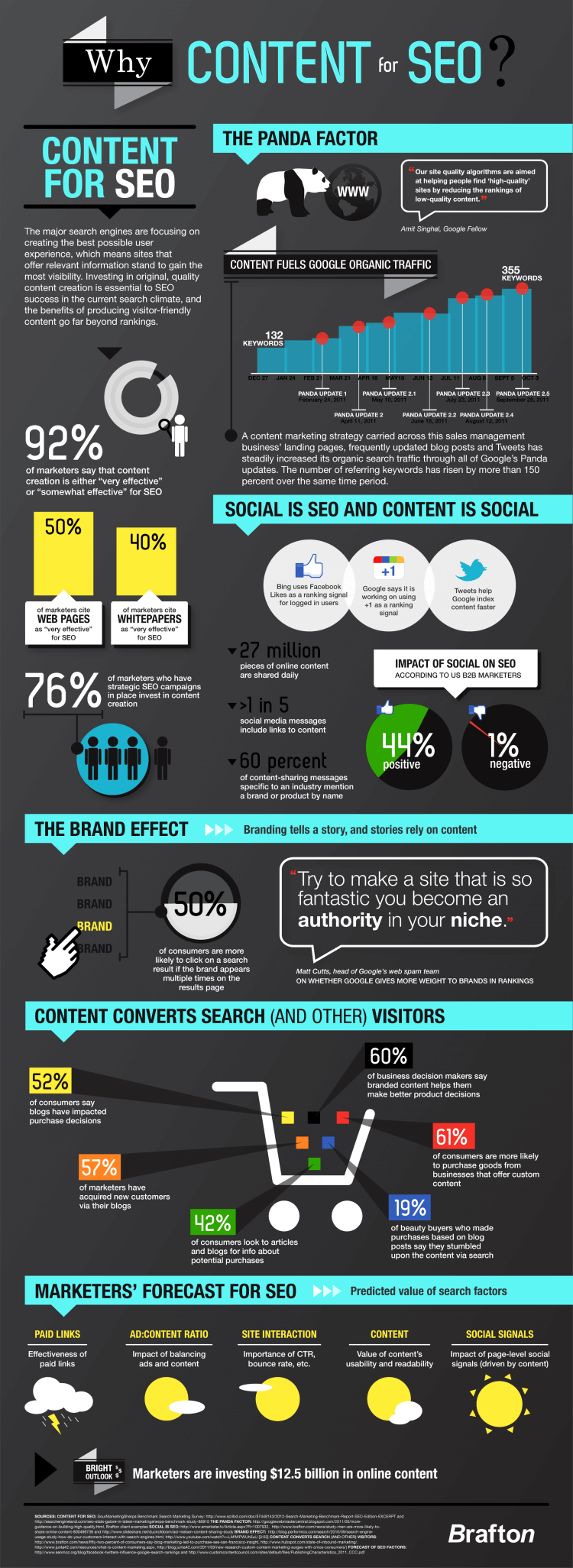
Several different elements go into designing a highly effective content marketing strategy. Considering this, it’s crucial for marketers to clearly establish their goals and channel their energies to overcome challenges. Content Marketing Institute’s 2014 Content Marketing B2C: Benchmarks, Budgets, and Trends – North America surveyed a total of 4,397 businesses around the globe between July and August 2013 on their use of content marketing, the types of strategies they employ, the budgets they allot, and the type of challenges they face.
What Are the Challenges Small Business Marketers Face?
Content marketing is definitely one of the hottest buzzwords around the web these days, and while some may still be skeptical about its importance in transforming brand perception, there’s no denying that content lies at the foundation of any business’s marketing strategy. Most B2B and B2C small businesses have already realized the many benefits of content marketing, allocating a significant part of their marketing budgets (31 percent, on average) for content creation and promotion. Moreover, over 50% of small businesses plan to increase the amount they allocate to content marketing over the next 12 months.
Here are their biggest issues when it comes to producing fresh content for their audiences:
- Lack of time – 57 percent
- Producing the kind of content that engages – 51 percent
- Lack of budget – 48 percent
- Producing enough content – 45 percent
- Inability to measure content effectiveness – 36 percent
- Producing a variety of content – 36 percent
- Lack of knowledge and training – 33 percent
- Lack of integration across marketing – 31 percent
- Lack of buy-in/vision – 23 percent
- Lack of integration across HR – 14 percent
- Inability to collect information from SMEs – 13 percent
- Finding Trained Content Marketing Professionals – 10 percent
Content that Engages

The greatest problem with content is that it’s too much of it, flooding the internet and suffocating users. Your quest is to get off the bandwagon that encourages marketers to create content just for the sake of it. You must realize that, for it to be able to cut through all the clutter and reach a specialized audience, you need to make it compelling and engaging.
One approach is to create content that’s valuable not so much for your company, but for the person reading it. Make it educational, informative, insightful, and helpful; even go on the emotional route, if you want to elicit a strong and immediate response. Keep in mind: any piece of content you want your audience to share must be valuable – otherwise it will be a total waste of resources and energy.
Other ways to engage your audience through content is to stay ahead of your competition and think of ways to interact with your public in attractive and exciting ways. Infographics are, for instance, one of the most appealing forms of conveying important information; social media campaigns can also enable you to reach users, while less technical documents, such as an interesting market research reports or webinars, can establish you as an authority in your niche and engage your audience.
How Much Is Enough?

According to a Forbes.com article, content marketing and marketing automation experts use the following algorithm to determine the exact amount of content needed by a specific organization. To figure this out, let’s assume you need:
- 4 target audiences.
- For each of your target audiences, you must identify the top 3 needs.
- Afterwards, you must distribute content across all channels that these audiences frequent: 5, on average.
- Final consideration: you need to stay current, so you must produce at least 1 piece of content per month, so 12/year.
The result? 720 pieces of original content you must produce per year, simply impossible for businesses that lack the resources, skills, or training.
Some solutions that can help:
- Prioritize: make content creation your priority, and results will soon follow. The most effective B2C businesses allocate 32 percent of their marketing budgets to content creation, while the least effective spend only 10 percent.
- Outsource: the functions most often outsourced by B2C small companies are writing and design (63% and 41%, respectively).
- Repurpose: Maybe you’ve already written an e-book and it doesn’t sell anymore – why not turn it into a webinar? Take some of the most interesting blog comments and write fresh pieces around them or start searching for industry data and put together a nice infographic.
Variety Is Important
To keep the audience interested at all times, you need to focus on a variety of content, and here you are at liberty to choose what form or length is best suitable for your message. You can go for written, or you may find audio content to deliver the most value; visual or interactive elements are also highly appreciated. Regarding the length, you can make it short or long, as long as the information you deliver stays fresh and relevant. Some of the most common content formats you can adopt are blog posts, videos, SlideShares, e-books, whitepapers, case studies, reports, newsletters, podcasts, and several others.
Well-crafted content is the best sales pitch in the world at the moment. With it, you can create value that attracts, entertains, informs, amazes, and builds trust. With a reasonable investment and amount of resources, you can achieve thought leadership and become an authority in your niche.






 Want 2017 SEO Success Factors at a Glance? Check Out This “Periodic Table”
Want 2017 SEO Success Factors at a Glance? Check Out This “Periodic Table” The Comprehensive Guide to How Content Marketing Can Grow Your Business
The Comprehensive Guide to How Content Marketing Can Grow Your Business Content Marketing for Small Businesses: Are You Reaping the Benefits or Sabotaging Yourself? (Part 2)
Content Marketing for Small Businesses: Are You Reaping the Benefits or Sabotaging Yourself? (Part 2) Content Marketing for Small Businesses: Are You Reaping the Benefits or Sabotaging Yourself? (Part 1)
Content Marketing for Small Businesses: Are You Reaping the Benefits or Sabotaging Yourself? (Part 1)